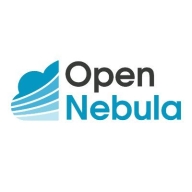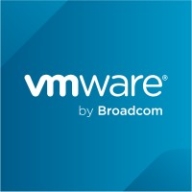

OpenNebula and VMware Tanzu Platform are competing products in the cloud management and application infrastructure space. VMware Tanzu Platform seems to have the upper hand due to its comprehensive features and advanced capabilities.
Features: OpenNebula is valued for its flexible infrastructure, ease of use, and integration capabilities, making it suitable for managing hybrid and multi-cloud environments. VMware Tanzu Platform offers strong support for microservices, Kubernetes integration, and robust security features, allowing advanced application development on a wider scale.
Room for Improvement: OpenNebula could improve by expanding its feature set to include more advanced security options and better Kubernetes integration. Enhancing scalability for large enterprises and streamlining the customization process would also be beneficial. VMware Tanzu Platform can improve by simplifying its deployment process to make it more accessible for smaller enterprises, reducing complexity for new users, and offering more competitive pricing options for smaller deployments.
Ease of Deployment and Customer Service: OpenNebula provides a simple deployment model with a focus on quick setup and personalized customer support, making it attractive for small to medium enterprises. VMware Tanzu Platform offers extensive deployment capabilities fitting enterprise-scale needs, but it may require a more complex initial configuration. Both platforms deliver reliable customer service, though OpenNebula is often seen as offering a more tailored approach.
Pricing and ROI: OpenNebula typically presents lower setup costs and favorable ROI for smaller-scale deployments, emphasizing affordability. VMware Tanzu Platform involves a higher initial cost yet potentially offers greater ROI in large-scale environments, with pricing reflecting its extensive capabilities.
| Product | Market Share (%) |
|---|---|
| OpenNebula | 5.7% |
| VMware Tanzu Platform | 1.1% |
| Other | 93.2% |


| Company Size | Count |
|---|---|
| Small Business | 7 |
| Midsize Enterprise | 6 |
| Large Enterprise | 3 |
| Company Size | Count |
|---|---|
| Small Business | 10 |
| Midsize Enterprise | 3 |
| Large Enterprise | 10 |
OpenNebula provides the most simple but feature-rich and flexible solution for the comprehensive management of virtualized data centers to enable private, public and hybrid IaaS clouds. OpenNebula interoperability makes cloud an evolution by leveraging existing IT assets, protecting your investments, and avoiding vendor lock-in.
OpenNebula is a turnkey enterprise-ready solution that includes all the features needed to provide an on-premises (private) cloud offering, and to offer public cloud services.
VMware Tanzu Platform is designed for cloud-native development and management of Kubernetes, CI/CD processes, microservices, and containerized workloads. It supports deployments both on cloud and on-premises, providing centralized management via Mission Control.
VMware Tanzu Platform offers seamless integration with vSphere, ESX, and vSAN, supporting centralized cluster management and lifecycle management. The platform provides a GUI for monitoring CI/CD pipelines and network policies, enhancing multi-tenancy and Day 2 operations. Users can easily manage Kubernetes clusters, monitor applications, and integrate with tools such as GitHub, GitLab, Cloud Foundry, and Azure. It ensures compliance and security for service providers, financial institutions, and businesses.
What are the key features of VMware Tanzu Platform?
What benefits and ROI should users look for in VMware Tanzu Platform reviews?
Industries such as financial institutions, service providers, and businesses requiring rigorous compliance and security deploy VMware Tanzu Platform. These entities benefit from centralized management, streamlined DevOps processes, and integrated tools, enhancing their capabilities in cloud-native developments and containerized workloads.
We monitor all Cloud Management reviews to prevent fraudulent reviews and keep review quality high. We do not post reviews by company employees or direct competitors. We validate each review for authenticity via cross-reference with LinkedIn, and personal follow-up with the reviewer when necessary.